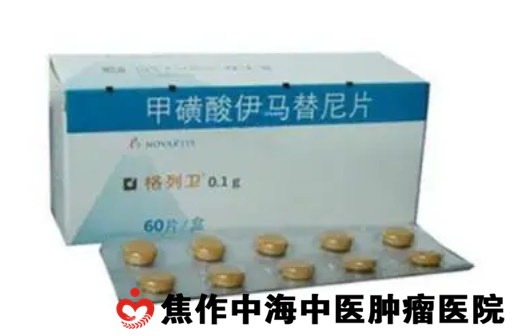1. Recent advances in the study of imatinib resistance and GIST.
The resistance of GIST to imatinib can be divided into primary and secondary. Primary drug resistance refers to the progress of imatinib in the first half of the year, and often shows the progress of multiple lesions. Secondary drug resistance is the progress of imatinib treatment for half a year. Secondary mutations in exon 1314 and exon 17 of KIT gene are often found in secondary drug resistant GIST.
The progress of GIST includes the appearance of new lesions, new metastases, enlargement of primary lesions and. The blood supply becomes abundant and so on. If new intratumoral nodules appear during treatment, and if the density decreases and then increases, it should also be regarded as tumor progression. Local progression refers to the appearance of intratumoral nodules in a single or small lesion, an increase in volume or an increase in blood supply. To deal with the local progress of GIST, multidisciplinary therapy is recommended, such as radiofrequency ablation, chemoembolization, surgical resection of liver metastases, increasing the dose of imatinib or switching to second-line drugs. Some studies have suggested that all kinds of local treatment can inhibit the local progression of lesions, but there is also a view that local treatment may make the disease progress rapidly in a short period of time.Extensive progress refers to the simultaneous occurrence of multiple lesions. The effect of local treatment on extensive progress is very poor, even ineffective. The regimen of increasing the dose of imatinib or switching to the second and third-line drug Shunitinib is usually used for GIST with extensive progress.2. Treatment of imatinib failed.After the failure of imatinib treatment, the following treatment strategies can be selected:High dose imatinib.30-40% of patients can benefit from increasing the drug dose for a certain period of time after the regular dose of imatinib (daily 400mg) treatment is ineffective. There is no significant increase in the side effects of 800mg drugs every day, but mental illness and anemia can occur. If the patient is unbearable, it can be reduced to daily 600mg. Studies have found that the median progression-free survival after increasing the dose of imatinib is 3-5 months, and the 12-month progression-free survival is 18% (600mg) to 30% (800mg).Second-line drug Shunitinib.Shunitinib can inhibit vascular endothelial growth factor receptor, KIT and PDGFRA genes when applied to GIST in the advanced stage of imatinib treatment failure, so Shunitinib can inhibit GIST through anti-tumor activity and anti-angiogenesis. The study found that GIST resistant to imatinib had a sensitivity of 10 per cent to shunitinib but had a clinical efficacy of 65 per cent; the median progression-free survival of sulnitinib treatment was 6 months, three times longer than that of the placebo group. For the drug administration regimen, it is recommended to start 50mg every day and stop the drug for 4 weeks and then 2 weeks. Because the symptoms of patients may worsen during the withdrawal period, some studies have analyzed the difference between the effect of continuous administration (daily 37.5mg) in daytime and nighttime, and found that continuous administration during daytime can achieve ideal effect, just like intermittent administration of full dose (daily 50mg). Some studies in China have found that the toxicity and side effects of continuous administration of 37.5mg are less than that of 50mg for 4 weeks and stopping for 2 weeks. It should be noted that there is no consensus on the sequence of use of high-dose imatinib and shunitinib.The third-line drug Rigofenib.Rigufei, a multikinase inhibitor of KIT, PDGFRA and vascular endothelial growth factor, was used after the failure of first-line and second-line drug treatment. The method was to 160mg every day for 3 weeks and rest for 1 week. Studies have found that the treatment response rate of regofinib is 4.5%, while the clinical effective rate is 50%, and the median progression-free survival time is 5 months.Reactivation of imatinib.If the third-line drug repagofinib fails again, it is better to return to imatinib daily 400mg than to give up T-KI therapy, because some GIST cells are still sensitive to imatinib. Many studies have found that after the failure of first-and second-line drug treatment, re-use of imatinib compared with placebo can benefit the survival of patients. Note that traditional cytotoxic drugs are not effective against GIST, so they are not recommended.

